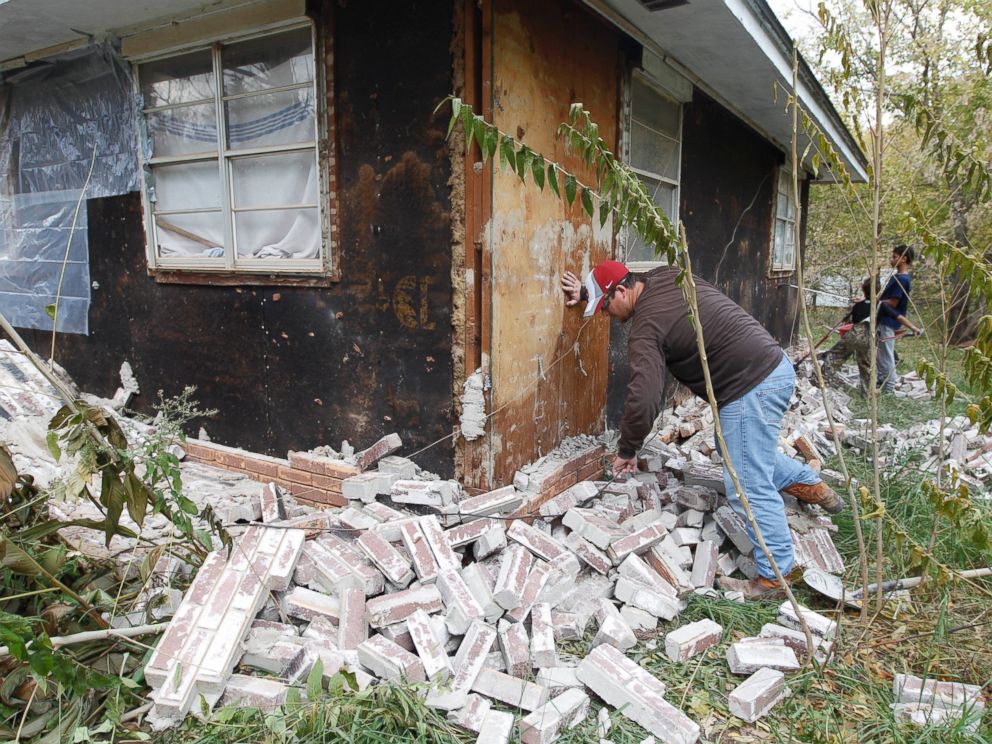Oklahoma Admits Oil and Gas Industry Responsible for Dramatic Rise in Earthquakes
State lawmakers have officially recognized the link between quakes and drilling.
— -- For the first time in the state's history, Oklahoma’s state government officially recognized the long held scientific consensus linking the disposal of oil and gas wastewater with the record number of earthquakes plaguing it in recent years.
On Tuesday, the Oklahoma Geological Survey released a statement declaring it was “very likely that the majority of recent earthquakes, particularly those in central and north-central Oklahoma, are triggered by the injection of produced water in disposal wells.”
The statement coincided with the launch of a website produced by Oklahoma’s Energy and Environment Cabinet, featuring an interactive map and links to expert studies detailing the scientific evidence behind the link between Oklahoma’s earthquakes and the disposal of oil and gas waste water. The website represents the first time Oklahoma lawmakers have recognized the link, after years of official skepticism.

Hydraulic fracturing, a controversial gas extraction process involving the injection of waste water into deep underground wells, has boomed in Oklahoma. In 2009, the state's landscape featured more than 32,000 oil wells, according to the U.S. Energy Information Administration.
Before Oklahoma’s recent oil and gas boom, which began in the mid 2000s, the state experienced only about one and a half earthquakes exceeding magnitutde 3.0 (the level at which most humans can detect an earthquake without scientific instruments) in an average year, according to the Oklahoma Geological Survey.
Last year, the state recorded 585 quakes of 3.0 or larger, about 600 times greater than the background seismic rate, according to the Oklahoma Geological Survey.
Another recent report by the U.S. Geological Survey claimed that the 5.6 magnitude quake that struck Prague, Oklahoma, in 2011, resulting in several injuries and damage to more than a dozen homes, appears to have been “waste water disposal induced.”
“There may be a link between earthquakes and disposal wells,” Chad Warmington, President of Oklahoma Oil and Gas Association, said in a statement released Monday, “but we -- industry, regulators, researchers, lawmakers or state residents – still don’t know enough about how waste water injection impacts Oklahoma’s underground faults."
But William Leith, senior science advisor for earthquake hazards at the U.S. Geological Survey, claims that evidence for waste water induced earthquakes is "well established in theory, laboratory, and field experiments."
“The earthquake rate in Oklahoma has increased so significantly that it raises the risk of a larger damaging earthquake," said Leith, who also warned that "Oklahomans should be concerned about this increased risk."

“Oklahoma state agencies are already taking action to address this issue and protect homeowners,” Oklahoma Gov. Mary Fallin said in a statement released on Tuesday, referring to her efforts to assemble the Coordinating Council on Seismic Activity last year.
But critics were quick to point out that the Governor's announcement came late and does not impose any measures to curtail the injection of waste water.
"The word finally popped across my head," said Cory Williams, a Democract and State Representative who has been an outspoken advocate for a moratorium on waste water injection and often points to scientific evidence of waste water induced earthquakes that he says has been available for years.
"I have been frustrated," Williams said. "We have a lot of bills that are all very much pro-industry, oil and gas related, yet we don't have a single bill in the process in regard to induced seismicity and oil and gas operations. I think that's a failure to act and a failure to protect our constituents."
Oklahoma isn’t the only state experiencing a dramatic rise in earthquakes as vast swaths of central and eastern parts of the country have recorded an uptick in seismic activity during their region’s oil and gas boom.
Between the years 1973-2008 there was an average of 21 earthquakes of magnitude 3.0 or larger in the central and eastern United States per year, according to the U.S. Geological Survey. Last year, there were 659 quakes of 3.0 or larger.
The increase in seismicity has been found to coincide with the injection of wastewater in deep disposal wells in states including Colorado, Texas, Arkansas, Ohio, and Oklahoma, according to the U.S. Geological Survey.




